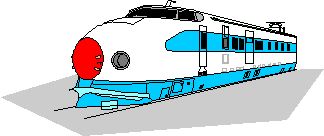
Lubbock Model Railroad Association
Staying on Track - April 2006
LMRA Newsletter 
Lubbock Model Railroad Association
Staying on Track - April 2006
Meetings at Highland Baptist Activity Center, Quaker Ave. and 34th St. - first
Monday of each month at 7:30pm.
April 3: Dave Lamberts. Let Randel Bittick know if you would like to
do a clinic this year.
Other events coming this year:
Arts Festival - April 20-23 Thur. - Sun. Setup on 20th by 6pm. - Fri. and Sat.
10am-8pm. - Sun. 12-5pm
Old Mill Trade Days - June 3-4 Saturday and Sunday - setup club pike
Dates not set: Playday,Home layout tour, Windsong, Carrillon, Cowboy Symposium,
Santa Land
Thanks to all those who helped at the Godeke Library setup at Spring Break.
Fast Tracks turnout jigs
Recently I purchased jigs to make Z and Nn3 turnouts (they are the same size
between the rails - 1/4 inch). The soldering and filing jigs are made by Fast
Tracks - http://www.handlaidtrack.com has much useful info. They make jigs for
Z, N, HO, S, O, and many narrow gauge variations of these. Each jig is custom
manufactured, using a computer controlled milling machine, from a solid block
of aluminum. They are expensive, but not unreasonable considering the quality,
and the fact that they are not mass-produced. If you are considering making a
lot of turnouts, you may want to have a look at them.
Handlaying track and turnouts is an exacting skill, but one I find to be relaxing
and enjoyable. I made quite a few turnouts several years ago by gluing the
PC board ties onto a printed template and using gauges while soldering to keep
everything lined up. Soldering the track without a jig is a lot easier if you
have more than two hands, which I don’t unfortunately. It was a little
like micro-surgery, I suppose, especially with code 40 rail (40/1000 inch high).
It helps to get a strong pair of reading glasses (3.25) for detail work in
any scale. They come in handy even in HO scale when gluing handrails onto locomotives.
So far I have made just two turnouts using the jigs. The soldering, which used
to be the most difficult part, is easy with a jig. They are made to a tolerance
of 1/1000 of an inch, which is a good thing, since the allowable tolerance for
z-scale turnouts in 5/1000 of an inch. Getting all the rails and ties ready actually
took more time than the soldering.
When I first hand made turnouts a few years ago, my first dozen or so were
discards. This time, my second one might be usable after I tweak the points
just a bit. I also bought a #6 PointForm filing jig for the frog and switch
points, which was very handy and made that job a lot easier. I didn’t
buy a belt sander to sand the base off the stock rails, but taped them to a
ruler and filed them by hand, which works well enough for the tiny code 40
rail. The first one I made was a #6, which will be probably be a discard because
it is off in a couple places, but might be salvagable. The second one, a #4,
was a bit rough looking in the soldering, and the points are too close to the
stock rails. Points are usually the hardest part to get right. You can download
templates and get more information, including movies at http://housatonicrr.fast-tracks.net